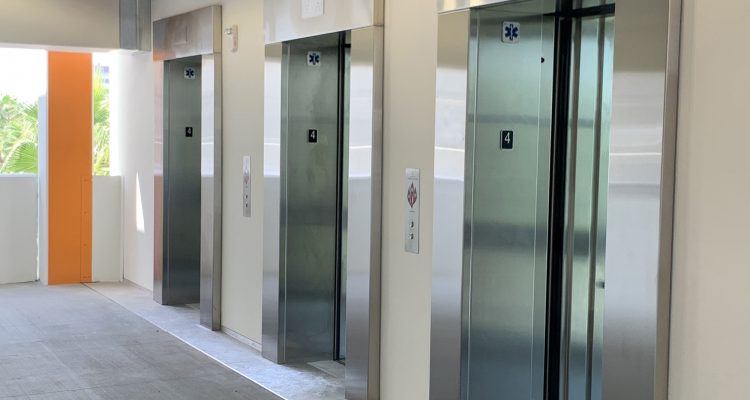Knowing when…
Defining what…
Deciding how…
There comes a point in any elevator’s life cycle when, after years of reliable service, it’s time to replace or modernize components of the system. As parts become more difficult to source, systems can become obsolete. For elevators with circuit boards, the expected life span can be even shorter.
Given the high cost of replacement, modernization is often the smartest option for giving new life to your elevator. Our team is here to help you make your modernization as smart as possible.
Having a game plan in advance of modernization is the key to getting the best long-term results. Planning ahead helps achieve the most benefits at the lowest cost, with the least disruption to your building and users.
Know when to modernize.
When you plan (and budget) for elevator modernization in advance, it allows your elevator service company to manage the process smoothly, and gives you time to be proactive in making the necessary accommodations. By planning ahead, you eliminate the potential for unexpected delays that can occur in the procurement of certain parts and components, allowing the modernization work to be done with the least amount of downtime. Ideally, a modernization project will be budgeted and authorized 5-6 months prior to the project due date. (Actual on-site work can require 4-12 weeks or more per elevator, depending on the complexity of the project.)
The decision of when to modernize any elevator requires a clear understanding of the state of your equipment, and how it measures up to current building codes, ADA compliance requirements, and state elevator codes. One must also consider the potential for failure if nothing is done. Our modernization team is happy to provide a careful evaluation of your system, explain all of your options, answer any questions, and help you determine when it’s time to move from a protocol of maintenance and repair, to modernization.
Define what to modernize.
A modernization project can run the gamut from simple to complex. A simple modernization may involve replacing the controller (the “brains” of your elevator), along with the control panels in the elevator and lobby areas, to achieve code compliance, along with added reliability. A complex modernization may involve hoist machine replacement, door operator replacement, hoistway door equipment replacement, cab interior upgrades, and seismic upgrades. In most cases, fire alarm systems (such as smoke and/or heat sensors) will need to be added to meet current state requirements, while making the elevator more modern, efficient, and reliable.
A decision to include door equipment in your modernization project can add cost and complexity but can be well worth the investment, especially when you consider that 90% of all trouble calls are related to door operation. In a door package, the door operator unit, car doors, landing hall doors, tracks and gibs, clutch, and door lock components are all potential candidates for modernization.
In defining the scope of your modernization project – reaching final decisions on which elevator components to modernize – it is important to work with an elevator service company or consultant you can trust to provide an honest assessment that covers every part of your system. This trusted partner should be given a clear understanding of your financial, operational, and business goals. They should be relied on to provide a clear explanation of each item in the modernization proposal, and to answer any questions about the overall project.
Decide how to proceed.
Following careful inspection, your elevator service company may recommend refurbishment, partial modernization, full modernization, or full replacement. Consider their recommendations carefully and seek a second opinion, if needed.
When receiving more than one bid for your elevator modernization project, it can be difficult to compare proposals, due to differences in recommendations and scope of work. Ask questions. Knowledge is a key part of any proposal review and approval process. We are committed to taking the time needed to carefully review and assess your system with you, explain all of your options, and most importantly, help you arrive at a modernization plan that is right for your unique situation.
Once you and your elevator company have finalized the scope of work together, and you have provided authorization (normally accompanied by a deposit), your elevator service company will develop a comprehensive schedule to complete your modernization. Actual on-site work (and resulting downtime) will typically require 4 weeks for a hydraulic elevator, or 8-12 weeks for a traction elevator modernization, depending on the scope of work for that particular project. Your service company should work with you to minimize equipment downtime for your tenants and visitors, while providing a safe, clean, and efficient work environment.
Conclusion.
At the end of your elevator modernization project, you will have the peace of mind of knowing that all aspects of your elevators – including redundant brake systems, fire safety systems, controllers, and other systems – are in good operating condition and in compliance with current codes.
If you need more information on elevator modernization, or would like to talk to a modernization specialist, please call us for a free consultation. We’ll be happy to evaluate your current equipment and provide our best recommendations to meet your goals. All of our modernization solutions utilize high-quality, non-proprietary parts and components, allowing any vendor to maintain your equipment in the future, and resulting in lower costs for the overall modernization project.



